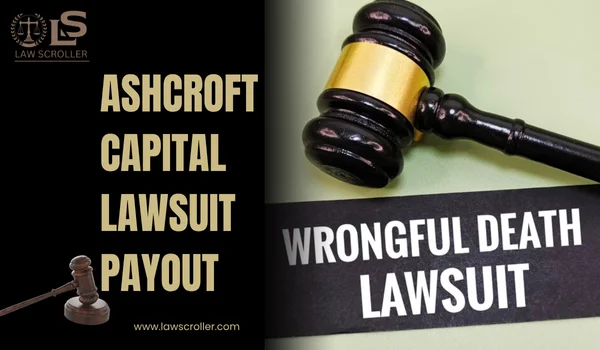When a loved one dies because of someone else’s carelessness — like a drunk driver, a doctor’s mistake, or a company’s negligence — families often turn to the legal system for justice. A wrongful death lawsuit helps hold the responsible party accountable and recover financial compensation for the loss.
But one big question many families ask is:
“Who actually gets the money in a wrongful death lawsuit?”
The answer can be complicated. The money doesn’t always go to just one person, and how it’s divided depends on state law, family relationships, and the circumstances of the case.
This guide breaks down everything you need to know — in plain English — about how wrongful death settlements work, who can claim, how payouts are distributed, and what to expect along the way.
Background: What Is a Wrongful Death Lawsuit?

A wrongful death lawsuit is a civil case filed when someone’s death is caused by another person or company’s negligence, recklessness, or intentional act.
This isn’t a criminal case (those are filed by the government). Instead, it’s about financial recovery for the surviving family — helping them cover expenses and losses that come with the death.
Common examples include:
- Car or truck accidents caused by reckless driving
- Medical malpractice (like surgical errors or misdiagnosis)
- Defective products, such as faulty brakes or unsafe drugs
- Workplace accidents or unsafe conditions
- Nursing home abuse or neglect
- Criminal acts, such as assault or homicide
When someone’s actions lead to a preventable death, the law allows surviving family members to seek compensation through a wrongful death claim.
Who Can File — and Who Can Get the Money
Each state has its own laws about who can bring a wrongful death claim and who gets the payout, but generally, these people are eligible:
- Spouse or Domestic Partner
The surviving husband, wife, or registered domestic partner is typically the primary beneficiary. They can recover for both financial and emotional losses — including companionship and support.
- Children (Biological or Adopted)
Children often share in the settlement, especially if the deceased parent provided financial support. Some states allow adult children to recover even if they were not dependents.
- Parents of the Deceased
If the deceased was unmarried or had no children, parents are usually next in line. They can claim for the emotional pain and financial loss of losing their child.
- Other Dependents or Heirs
In some states, other relatives — like siblings, grandparents, or stepchildren — may be eligible if they were financially dependent on the deceased.
- The Estate (Through a Personal Representative)
In many states, the wrongful death lawsuit must be filed by the estate’s personal representative (executor), who then distributes the settlement to the rightful heirs under state law.
How the Money Is Distributed
Once a wrongful death lawsuit settlement is reached — whether through negotiation or a court verdict — the money is divided in one of two main ways:
- According to State Law (Statutory Distribution)
In some states, the law sets out exactly how wrongful death compensation should be divided. For example:
- The spouse may receive half or more of the settlement.
- The remaining amount is divided among the children or parents.
- If there are no immediate family members, the money might go to the estate.
- According to a Will or Estate Plan
If the deceased had a will, the settlement funds often become part of their estate, and the executor distributes them according to that document — after paying any debts or legal fees.
- Court Approval for Fairness
In cases involving multiple family members (like spouses, ex-spouses, or stepchildren), the court may step in to ensure the settlement is divided fairly based on each person’s relationship and dependency on the deceased.
Timeline: From Filing to Payout
Here’s a simplified look at how a wrongful death lawsuit usually unfolds:
| Stage | What Happens | Timeframe |
| 1. Investigation | Attorney collects evidence — police reports, medical records, witness statements. | 1–6 months |
| 2. Filing the Lawsuit | Case is officially filed in civil court. | Immediate (after prep) |
| 3. Discovery Phase | Both sides exchange evidence and take depositions. | 6–12 months |
| 4. Negotiations | Most wrongful death claims settle out of court. | Ongoing |
| 5. Trial (if needed) | A judge or jury decides fault and compensation. | 1–3 weeks for trial; may take 1–3 years total |
| 6. Settlement Payout | Funds are distributed to beneficiaries after attorney fees and court approval. | 1–2 months after resolution |
What’s at Stake: How Much Can Families Recover?
The wrongful death lawsuit payout can range from tens of thousands to millions of dollars, depending on the case.
Typical damages include:
- Economic Losses
- Lost income and future financial support
- Medical expenses before death
- Funeral and burial costs
- Non-Economic Losses
- Emotional pain and suffering
- Loss of companionship, love, or parental guidance
- Punitive Damages
In extreme cases — like drunk driving or corporate misconduct — courts may award punitive damages to punish the wrongdoer.
Average Payout Ranges (Estimates)
- Car accident wrongful death: $250,000 – $2 million
- Medical malpractice: $500,000 – $3 million
- Workplace accident: $200,000 – $1.5 million
- Product liability or corporate negligence: $1 million – $5 million+
What to Watch Next: Case Updates and Trends
- State Law Updates
Many states are revising their wrongful death laws to allow more people — like unmarried partners or adult siblings — to claim compensation.
- Larger Corporate Settlements
Recent wrongful death settlements against trucking companies, hospitals, and nursing homes have reached record amounts, pushing companies to improve safety measures.
- Court Oversight on Settlements
Courts increasingly require transparency and fairness when dividing funds, especially in disputes between multiple family members.
- Faster Mediation
More courts are encouraging mediation to avoid lengthy trials and help families receive settlements faster — often within a year.
FAQs: Who Gets the Money in a Wrongful Death Lawsuit
Q1: How is the wrongful death settlement divided among family members?
It depends on state law and the family situation. Typically, the spouse and children share most of the settlement, while parents or other dependents may also receive a portion if there are no immediate heirs.
Q2: What if the deceased had debts or loans?
If the wrongful death payout goes directly to family members, creditors can’t touch it. But if it becomes part of the estate, debts might need to be paid before distributing the money.
Q3: Can stepchildren or unmarried partners claim money?
In some states, yes — if they were financially dependent on the deceased or legally recognized as family. Always check your state’s specific laws.
Q4: Do I have to pay taxes on a wrongful death settlement?
Most wrongful death settlements are not taxable, since they compensate for personal injury or loss. However, punitive damages and interest may be taxed.
Q5: What if family members disagree on how to split the money?
If disputes arise, the court can hold a fairness hearing to decide who receives what, based on financial dependency and relationship to the deceased.
Q6: How long does it take to get the settlement money?
Once the case settles, payments typically arrive within 30–60 days, depending on how quickly the paperwork and approvals are processed.
Bottom Line
In a wrongful death lawsuit, the goal isn’t just money — it’s justice, accountability, and security for the family left behind.
Who gets the money — and how much — depends on state laws, family relationships, and the details of the case. While the process can feel complex, a qualified wrongful death attorney can guide you through it, ensuring the settlement is handled fairly and efficiently.
If you’ve lost a loved one due to someone else’s negligence, don’t wait too long. Each state has a statute of limitations — often two to three years — to file a claim.


 Oliver Johnson is LawScroller’s Senior Legal Correspondent specializing in civil litigation, class actions, and consumer lawsuit coverage. He breaks down complex settlements and court decisions into clear, practical guidance for readers.
Oliver Johnson is LawScroller’s Senior Legal Correspondent specializing in civil litigation, class actions, and consumer lawsuit coverage. He breaks down complex settlements and court decisions into clear, practical guidance for readers.